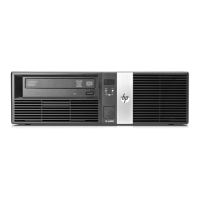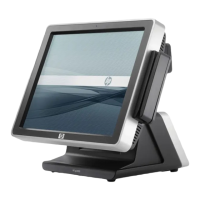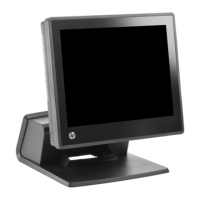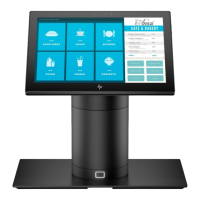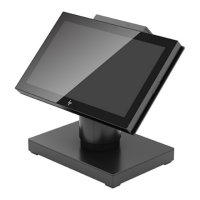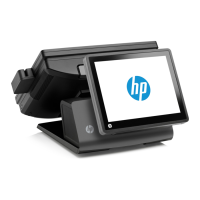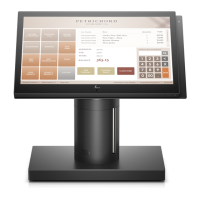-liBiMi'
'----
_______
D_a_ta_C_o_m_m_u_n_ic_at_io_n_s~.1
VII
I
INTRODUCTION
No
matter
what
programs
exist
within
it, a
computer
by
itself
is useless;
there
must
be a
way
of
entering
data
into
it
and
getting
data
out
of
it.
For
most
types
of applications,
this
means
connecting some
terminals
to
the
computer.
That
is
where
the
field
of
"data
communications"
enters
the
picture.
There
are
several
ways
to connect a
terminal
to
a computer.
To
arrive
at
a
particular
way,
you
must
compare a
number
offactors
and
make
a
series
of
decisions.
Mter
selecting
the
necessary
equipment
and
cables,
you
must
then
physically
connect
the
terminal
to
the
computer
(or
to
the
modem,
if
that
is
what
you
have
chosen)
and
configure
the
terminal
for
use
with
the
particular
type
of
data
communications
link.
This
section is divided
into
four
parts:
1.
The
.first is a
general
discussion
that
should
help
you
decide
what
type
of
equipment
and
cabling
you
need
for
each
desired
data
link.
2.
The
second
tells
you
how to
physically
install
the
ter-
minal.
3.
The
third
tells
you how to configure
the
terminal
to
operate
properly
with
the
selected
type
of
data
link.
4.
The
final
part
provides
programming
reference
ma-
terial
for someone who is
writing
a
data
comm
driver
or
controller
program
to
communicate
with
an
HP 2624A
in
a point-to-point
environment.
SELECTING EQUIPMENT AND CABLES
To
select
the
most
suitable
and
least
expensive combina-
tion
of
equipment,
cables,
and/or
common
carrier
(telephone
company) facilities,
you
must
approach
the
overall
situation
in
a
systematic
fashion.
For
each
available
data
communications
port
on
each
available
computer,
you
make
a
series
of
decisions
starting
at
the
most
general
level
and
working
downward
from
there.
Each
decision
determines
the
next
set
of
capabilities to be
considered.
Before proceeding
with
the
decision
making
process,
let
us
briefly
define
the
most
important
terminology
as
it
per-
tains
to HP 2624A
data
communications.
Data
Link:
The means
by
which
a terminal
is
connected
to a host computer. This
always includes
some type
of
communications
line
(a
coaxial
cable,
the public telephone network, or a
leased telephone
line)
and
it
may
also include
a pairof modems (one ateach end
of
the
line).
Point-to-Point: A
data
communications configuration
in
which
a single terminal
is
connected to a host
computer over a data
link.
The
HP
2624A
is
designed
for
use
with
a point-to-point data
link.
Asynchronous: A mode
of
transmission
in
which
each data
character
is
framed
by
a "start bit" and one or
more
"stop
bits". The interval between
successive data characters
is
random. The
HP 2624A is
designed
for
use
with an
asynchronous data
link.
Half
Duplex: A data
link
in
which
data can
be
transmitted
in
only
one direction at a
time.
Each time the
direction
of
the data
flow
is
reversed the
modems
on
each end of the
line
must switch
from
"transmit" state to "receive" state
(or
vice
versa).
This
state transition
is
called a
"line turnaround".
Full
Duplex: A data
link
in
which
data can
be
transmitted
in
both directions simultaneously.
Character
Mode:
When
the terminal
is
operating
in
character
mode,
it
sends data characters to the
com-
puter one at a time as they are typed through
the keyboard.
Block
Mode:
When
the terminal
is
operating
in
block
mode,
data characters typed through the keyboard
are
merely stored
in
display
memory.
When
a
block transfer
is
subsequently triggered
(by
the host computer or
by
pressing the
II1II
key
or another appropriately defined
key),
a
group
of
data characters are sent
from
the
terminal to the computer as a block.
A point-to-point
configuration
is
the
standard
form
of
data
communications
within
the
industry
(it
is
sometimes
referred
to
as
a "Teletype-compatible"
data
link). Point-
to-point is
supported
by
most
computers.
At
any
given
time,
it
accomodates only one
terminal
per
data
link;
it
may, however,
operate
in
either
character
mode
or
block
mode.
You
must
now define
the
major
characteristics
of
the
data
link
by
making
the
series
of decisions
illustrated
in
figure
7-1.
You
will notice
that
in
that
figure
the
overall
set
of
decisions is organized
as
a
tree
structure
and
that
when
you
make
each
choice
you
then
follow
the
associated
branch
to
the
next
set
of
alternatives.
For
each
desired point-to-point
data
link,
you
must
decide
whether
you
want
a
hardwired
or modem connection.
A
hardwired
connection,
where
feasible, is
the
cheaper
alternative
because
it
eliminates
the
use
of modems
and
common
carrier
(telephone company) lines.
7-1
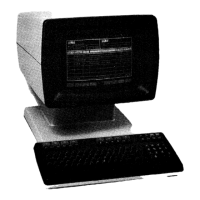
